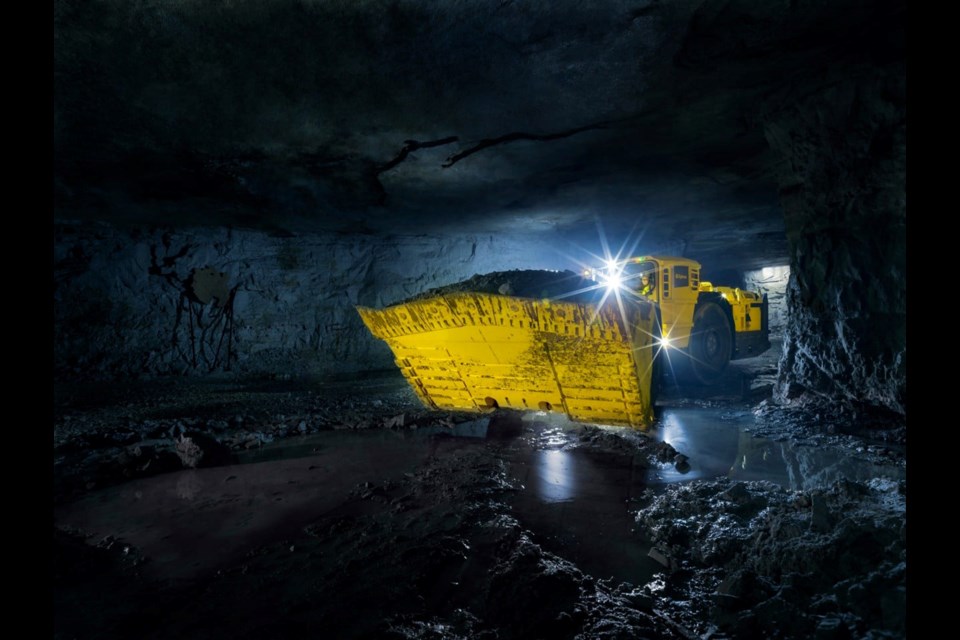Although the Ontario government has announced that diesel exhaust emissions are going to be lowered in Ontario mines, the Laurentian University researcher heading up the United Steelworkers Diesel Particulate Project says the level of exhaust emissions will still be too high when compared to other modern countries.
George Flagler, is a graduate student in the Master's interdisciplinary health program at Laurentian University and a researcher at the Centre for Research in Occupational Safety and Health (CROSH). He presented an update on the diesel exhaust project at the annual Mining Health and Safety Conference hosted in Sudbury April 18-20 by Workplace Safety North.
Flagler said the recent announcement by the Ontario government to improve underground mine ventilation and reduce the exposure to diesel exhaust emissions is a step in the right direction, but it is still a long way from resolving the issue.
He said the United Steelworkers (USW) will continue the fight to make diesel emissions significantly lower.
Under the new rules in Ontario, effective Sept. 1, 2023, "the new exposure limit will be a time-weighted average exposure to elemental carbon of not more than 0.12 milligrams per cubic metre of air, instead of 0.4 milligrams per cubic metre of air based on total carbon," according to a news release from the Ministry of Labour, Immigration, Training and Skills Development.
Flagler explained to the health and safety delegates that the new Ontario exposure limit announced is actually 120 micrograms per metre cubed. Flagler said the goal — as determined by USW and other researchers — is to reach an exposure limit of 20 micrograms per metre cubed.
In a detailed slide presentation, Flagler said Ontario is currently at an occupational exposure limit (OEL) of roughly 315 micrograms. The U.S. has a recommended exposure limit of 126, but Finland has an exposure limit of just 20 micrograms, he said.
"So we're behind. As much as we in the mining sector takes pride in that we're ahead in advancements in health and safety, when it comes to this, we're lagging behind and have been for some time. So we need to make changes," said Flagler.
"Part of the issue with this as well is there is no harmonized occupational exposure limit in Canada," he added.
Flagler said in many countries the diesel exposure level is set as a national standard. In Canada, the exposure levels vary from province to province, he said. For example, Saskatchewan is at 160 micrograms per meter cubed, while Quebec is at 400 micrograms, he said.
Flagler said the urgency for the issue is simple. Diesel exhaust can cause cancer.
"It's classified as a Group One known human carcinogen. It causes or contributes to lung cancer, and bladder cancer," he said.
"The inhaled diesel particulate is what we're really concerned about. These are those small particles that are entering the lung and then going through the bloodstream into the rest of the body. And they penetrate deep within. And that's where we're gonna get into some of the health hazards that are associated with it," he added.
Flagler also quoted some of the research that has been undertaken in the past year since the diesel particulate project began. He said part of the work involved getting information out to miners and former miners, and gathering data from individuals who worked underground and may have been exposed to diesel exhaust over the years.
This includes operators of load-haul-dump (LHD) scoops, backfill trucks, jumbo drill operators, rockbolter trucks, pipe trucks, shotcrete vehicles and service tractors. It also includes miners who worked in close proximity to such vehicles.
He said hundreds of workers were contacted and while a large percentage of them knew they could talk to union representatives or health and safety reps about the issue, there was a concern that some workers had no idea of the study or of the dangers associated with diesel exhaust. It was not a large percentage, but Flagler said it still needs to change so that more workers are aware.
He said social media has played a significant role in educating workers, along with literature that has been mailed out.
Flagler said up to this point, the diesel project has gathered worker stories and recollections of working conditions, information and data is being compiled, and a formal report will be sent to the Ontario labour ministry in May.
There is also the hope that mining companies will begin enforcing lower diesel exhaust exposure limits before September. He added there is hope that all diesel exhaust will disappear once battery electric vehicles become the norm in mining.
"That's the long-term goal. But we're not there yet. And it's going to take years and years to get there. So we need to deal with this issue now to protect our worker safety," Flagler said.
"So some of the key takeaways out of this project are that mine workers overwhelmingly feel that they're being overexposed to diesel particulate, over 90 per cent of them. And that was huge," Flagler said.
"We need to increase the worker's knowledge about diesel particulate. Only about 49 per cent said that they were somewhat knowledgeable about diesel particulate in mines.
"So here's where we need to do a better job of educating the people that are in there; that are being exposed, about what some of the dangers are and what they can do to mitigate that."
— Sudbury.com


